Technology Empowers Construction Firms to Beat Surging Construction Inflation
Togal.AI
|
Rising inflation rates across the globe threaten to dampen the construction industry’s growth.
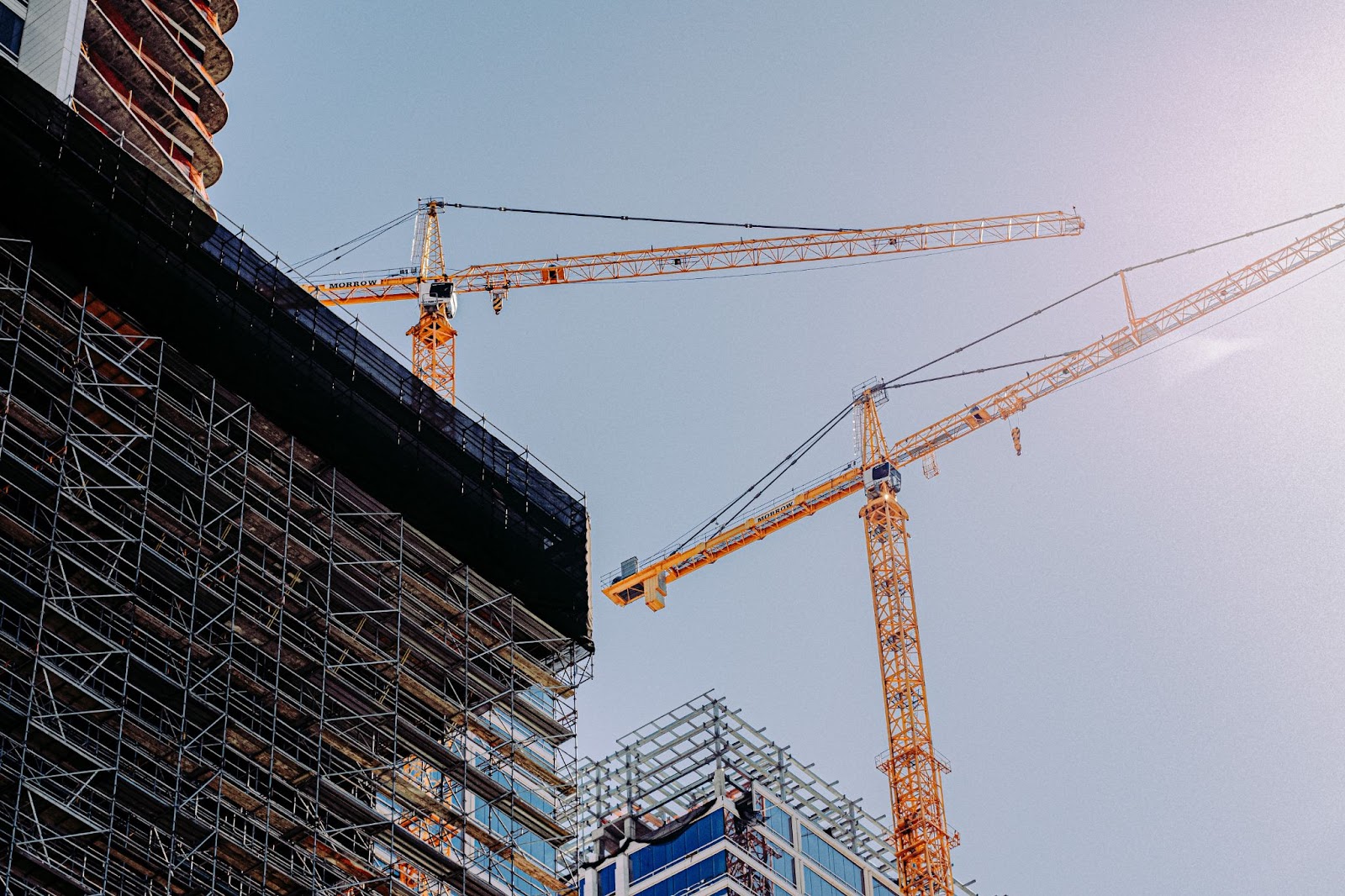
Global construction service and goods expenditures total about $10 trillion a year, making it one of the world's largest industries.
In the United States, a thriving housing market, bustling megacities, and countless infrastructure upgrades are being built at a remarkable pace. This industry is forecast to grow 8.8% in the year 2022 following a strong rebound in demand in 2021. The pandemic housing boom— has seen U.S. home prices soar 19.8% over the past year.
Despite the strong market forecast of its continued growth, the construction industry growth has been stifled by soaring inflation and record-high interest rates. Increasing material costs compounded by rising inflation and interest rates have reduced margins and affected business bottom lines.
Crippling Inflation Rates threaten Construction Industry’s Profitability
For the second year running, general contractors have been plagued by many of the same obstacles they faced in 2021, including ongoing supply chain interruptions, workforce struggles, and rising labor costs exacerbated by the rising inflation rate.
Inflation has taken a toll on the growth of the construction industry - with productivity not keeping pace with its growth, inflation threatens to diminish the profits achieved by construction this year 2022.
Pre-development is a phase during which many companies collaborate with contractors to reduce costs. However, with the construction goods market being so volatile, prices change so quickly once the project begins that the estimates may be inaccurate.
The construction sector is ripe for innovation
Construction as an industry is one of the oldest and most prominent industries in the history of humankind. The industrial age has brought about an unprecedented expansion in human activity that is focused on one thing - building more things.
Today, it’s one of the few industries that has its roots firmly planted in the past and in established traditions. It is only just beginning for the construction sector to evolve with the digital revolution, and this sector has a lot of room for innovation in the near future.
Every step of the building process: from preconstruction to post-construction, there are countless ways where technological innovation catalyzes renewed growth and increased productivity.
This article aims to explore how recent advances in technology effectively reduce costs, offset rising inflation, and boost efficiency and productivity in the construction sector.
Soaring construction costs are at an all-time high
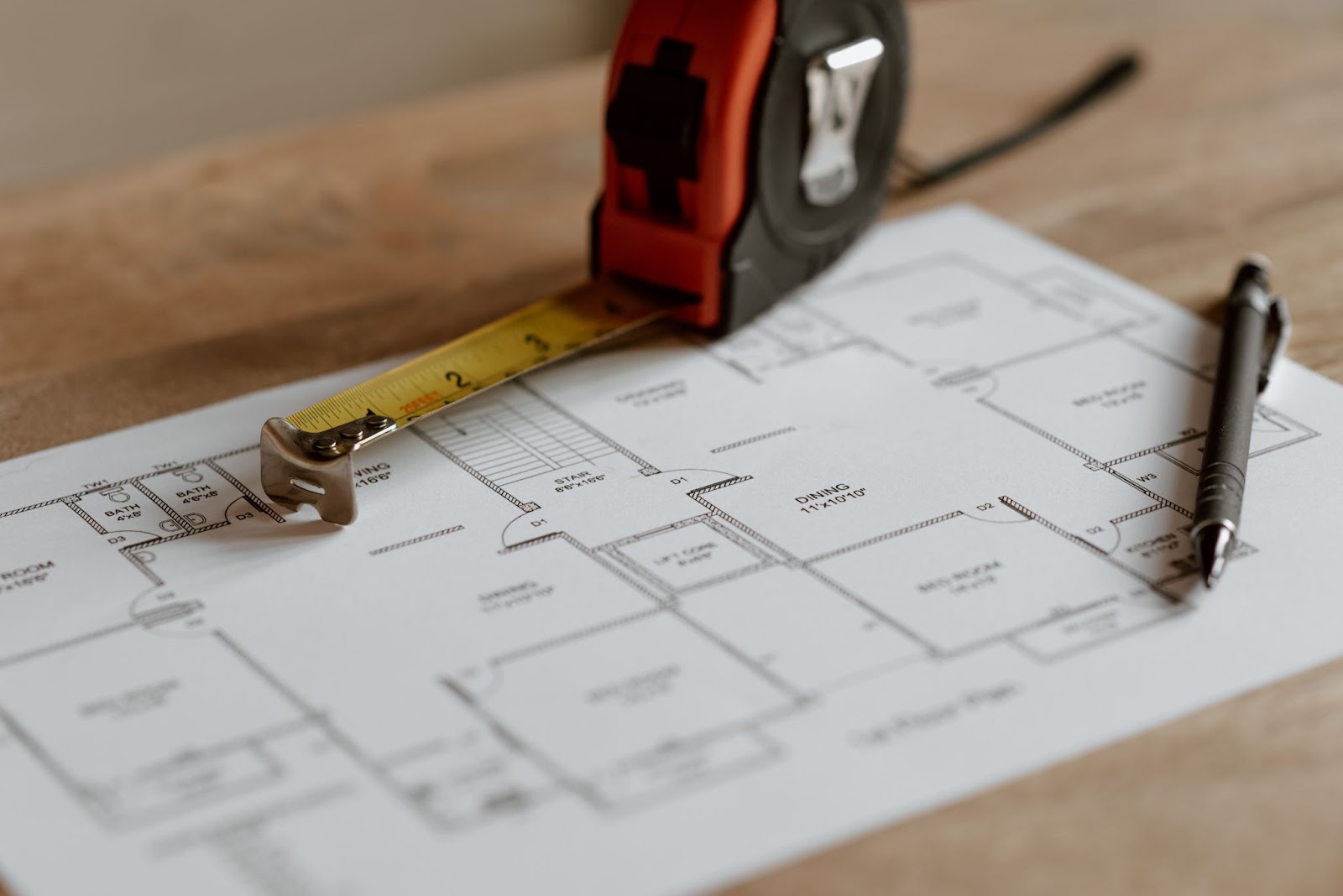
The rising cost of materials is closely related to the supply chain backlog. According to the Bureau of Labor Statistics, construction material prices were up by 25% in 2021 and the cost of construction in 2022 remains historically high.
General contractors are feeling the pinch brought about by skyrocketing inflation rates. Profitability has diminished since not all costs can be passed on to consumers as this will affect the competitiveness of their bids.
- Shortage of Qualified Workers
Labor force problems in the industry were exacerbated by the pandemic in the past two years.
According to ABC President & CEO, Michael Bellaman, “ABC’s 2022 workforce shortage analysis sends a message loud and clear: The construction industry desperately needs qualified, skilled craft professionals to build America”
By 2022, the construction industry will have to hire more than 650,000 additional workers beyond the normal hiring pace to keep up with the labor force demands.
The shortage of skilled workers in this thinning labor market dramatically increased construction labor expenditures due to higher wage demands. Since the COVID-19 pandemic erupted, wages have already increased significantly, reflecting the intense competition for employees, with employers offering higher salaries or other non-wage benefits.
According to the Bureau of Labor Statistics, construction wages grew 7.9 percent between December 2019 and 2021.
In order to remain competitive, construction companies will have to raise pay even more in the coming months.
There is a shortage of skilled laborers on job sites, which is causing structures to take longer to build, with some projects being canceled completely.
The resulting surge in construction wages, combined with climbing material prices, has produced significant increases in the cost of delivering construction services. Labor and skills shortages have the potential to slow growth and erode profitability across the construction value chain. - Materials Sourcing Shortage
A pandemic-induced disruption of supply chains is affecting the global economy, but the construction sector is being hit particularly hard.
The rising cost of materials is closely linked to the supply chain backlog. As reported by the Bureau of Labor Statistics, construction material prices increased by 25% in 2021, and thus far, the cost of construction in 2022 remains high.
According to the latest Producer Price Index (PPI) report released by the Bureau of Labor Statistics, the prices of goods used in residential construction and building materials prices are up 19.2% and have risen 35.6% since the start of the pandemic.
The table below shows that prices as of March 2022 have spiked upwards due to rising global inflation rates and with the trend showing continued upward price movement in the next few months.

Based on the Associated Builders and Contractors (ABC) analysis of the U.S. Bureau of Labor Statistics’ Producer Price Index data, contractors have been hit hard and feeling the pinch on their profitability because of soaring prices that outpace the estimated bid prices. Since bids are on a contract, they cannot adjust based on price movement fluctuations and volatility.
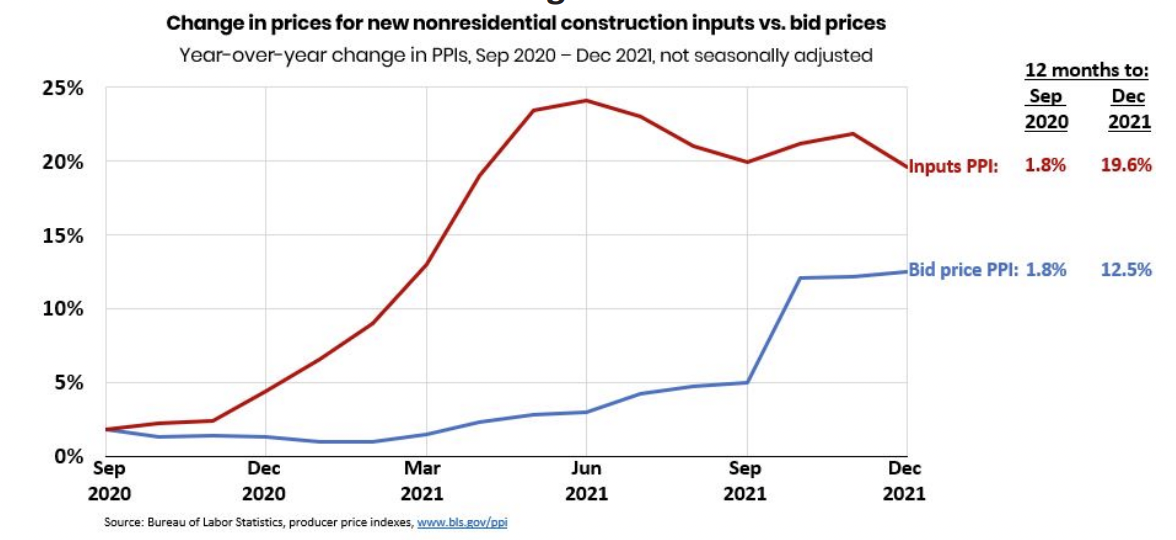
"Shortages of materials are now more widespread than at any time since NAHB began tracking the issue in the 1990s, with more than 90% of builders reporting shortages of appliances and lumber"- NAHB
Sourcing issues are made worse by stockpiling of materials, which are expected to continue in 2022. As inventory is reducing, construction materials are being stocked in greater quantities, since materials that are normally purchased as needed are now being purchased in bulk and stored on the job site (or warehouse) so that they can be used throughout the project.
According to the table below, major building materials like steel, aluminum and plastic have risen by as much as 127% in the year 2021 according to data from a report by the AGC.
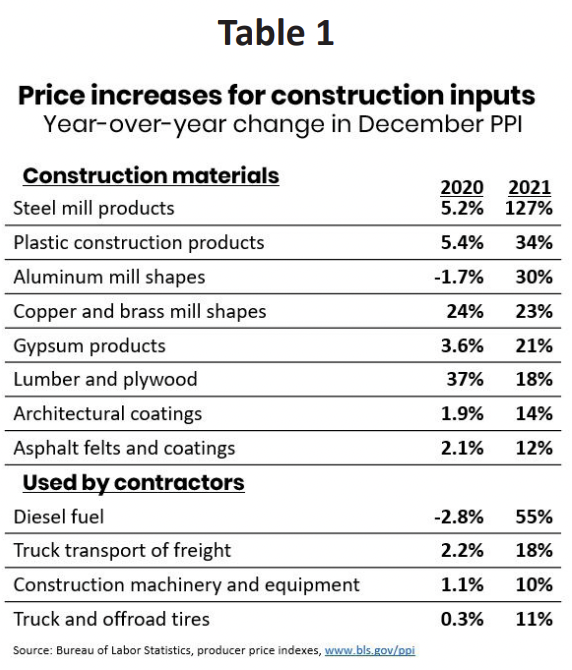
In addition to material costs going up, deliveries and demands for materials are showing that shortages are delaying deliveries and extending project timelines.
- Record-breaking Inflation Rates
Inflation readings show that the US experienced its highest inflation rate since 1982. Skyrocketing gas prices amidst the Russia-Ukraine war have caused global inflation rates to surge, and its effects are far-reaching.
The Russian invasion of Ukraine fueled inflation last year by reducing crude oil supplies and creating supply chain bottlenecks for commodities such as energy, wheat, and other products from the region.
Because of this, the US inflation rate hit a record 40-year high last March 2022 and the graph below illustrates the skyrocketing expenditures across the construction landscape.
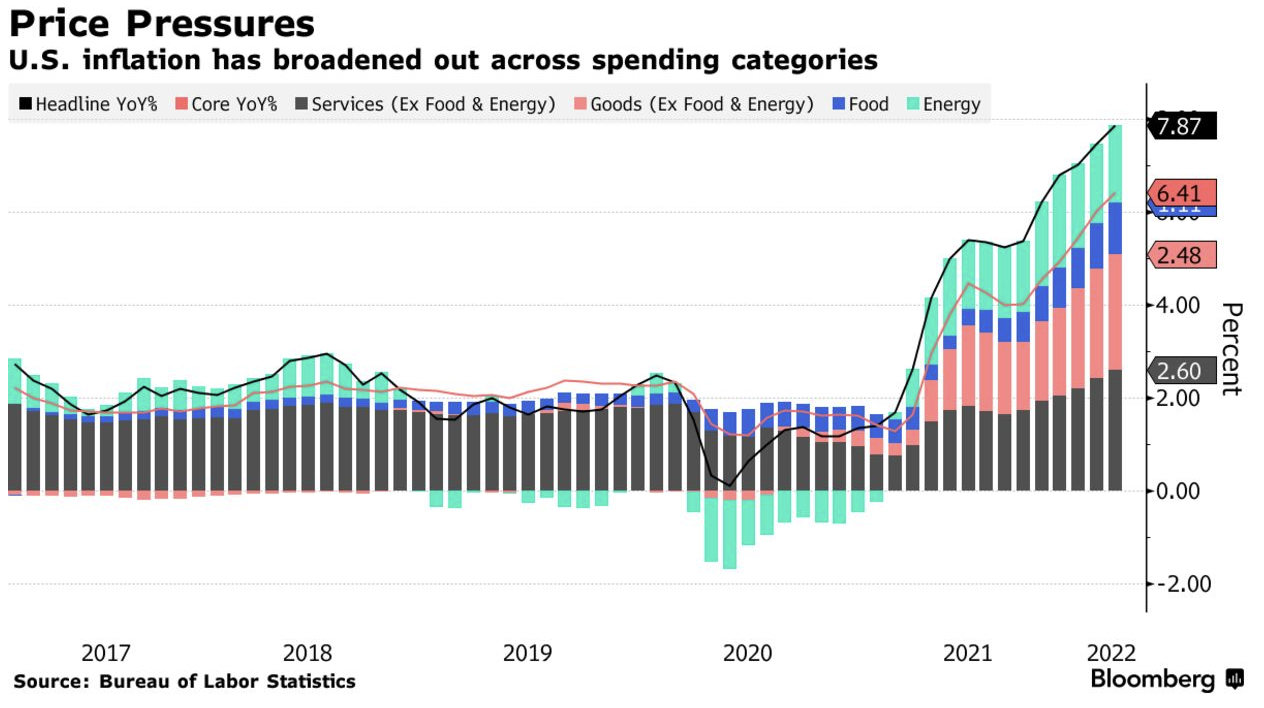
The rapid rise in the US economy’s inflation rates means that cost of goods and services, including labor, will continue to rise to keep up with thinning profitability.
Any construction project is governed by the budget, and for many general contractors, increased material costs cannot be passed on to clients; unfortunately, the costs must be absorbed by these firms.
Technology is one way to mitigate soaring inflation rates

The construction industry has typically been slow to adopt innovative and technological solutions to optimize construction schedules, increase efficiency and reduce overhead costs.
General contractors are still relying on “tried-and-tested” equipment, processes, and techniques; these archaic and outdated ways of working are contributing to the lack of innovation and slow productivity growth in the construction industry.
However, with record-high inflation threatening to diminish profitability and as the gap between the supply and demand of skilled workers increases, companies are now embracing nascent technology as an essential weapon in the fight against increasing inflation.
Below are successful use cases for technology:
1. Drones
Perhaps the most well-known of all the technological advancements in construction, drones are the most noticeable tech advancement in this industry. Drones help save precious time and reduce costs by quickly accomplishing labor-intensive tasks such as topographic land surveying and creating accurate aerial 3D models for estimating quantities.
2. Robotics
Construction is a labor-intensive sector. It has been shown that robot-assisted automation helps reduce construction-related costs as well as improve efficiency and productivity.
The majority of these robotics are employed in the offsite manufacturing part of the construction lifecycle. Robots are effective workhorses that have little to no deviation from the instructions they receive. These machines offer consistent, reliable, and cost-effective labor-saving alternatives that automate monotonous tasks and reduce costly mistakes.
Offsite prefabrication manufacturing powered by robotics also addresses shortages in construction materials that otherwise have to be purchased from a manufacturer - and with the increasing inflation rates on construction raw materials, 3D printing robotics offer cost-efficient, highly customized, and less expensive alternatives instead of procuring these from manufacturing firms.
3. AI powered software
Artificial intelligence in the construction sector is a nascent technology that helps to eliminate costly and time-consuming manual processes, eliminate “human” errors, leverage millions of data points and create insights that make better-informed decisions for stakeholders.
An excellent use case for the power of AI is in the estimation process.
One of the most cumbersome parts of the bidding process is completing the estimate. Project drawings are thoroughly analyzed by the project management team and estimators. Out of which they build a comprehensive list of the materials needed for the project.
Advanced AI estimating software like Togal.AI leverages deep machine learning to automatically analyze drawings and generate quantity reports. A complete takeoff is done in seconds.
Estimates finished faster benefit from more current and accurate pricing. The faster estimates are finished, the more bids that can be sent, and the more projects to potentially win.
General contractors that complete bids faster increase the chances of winning more construction projects and, therefore, reduce costs both from a labor-saving perspective as well as from an increased profit standpoint.
4. Cloud Computing
Cloud-based solutions help facilitate streamlined cross-project teams coordination in a fast, secure and mobile-friendly environment.
It enables project teams and construction field workers to centralize all information into one accessible and fast repository this dramatically increases productivity across multiple aspects of a project from preconstruction, site management, project management, and documentation.
Cloud-based apps provide end-to-end solutions that improve the productivity and efficiency of the project stakeholders. The construction workers will be able to participate more readily and the project team will be organized and integrated with the latest information. Less time spent on collaboration increases the productive hours of every single stakeholder in a construction project.
Technology empowers construction firms to offset inflation
The inflation rate in construction is neglected in most of the construction project's economics and budgeting which causes project cost overruns as the building materials prices, labor wages, and machinery hire rates are changing annually.
Construction has a reputation for being one of the least digitized industries in the world. By embracing innovation – in technology and processes general contractors can effectively dampen the effects of rising inflation and ensure that they remain profitable now and in the future.
Inflation is all about forecasts and estimates but in the end, what matters most here isn't just about forecasting and passing on expenses to the clients; it's taking action. Delayed projects cost more money in the long run.
Technology that promises to deliver faster turnaround times like Togal AI help reduce overall cost, decrease project estimation turnaround time and fill more bids. To learn how Togal.AI can integrate with your workflow, request a demo.
